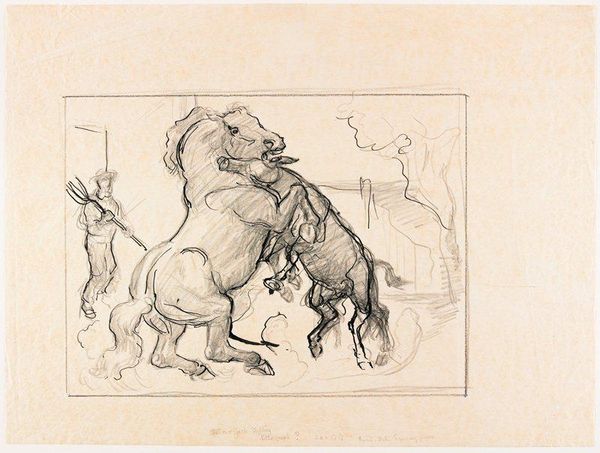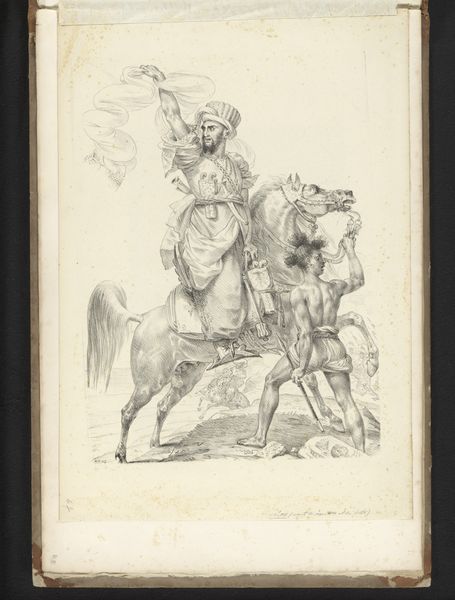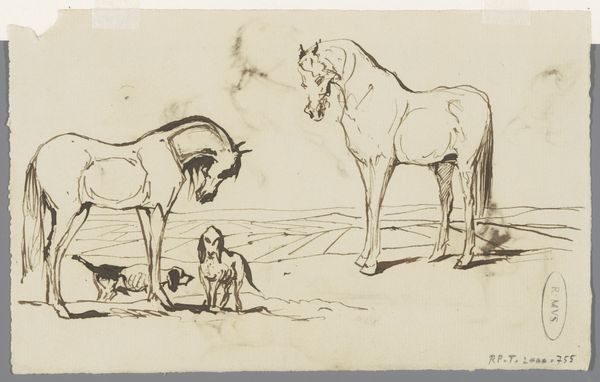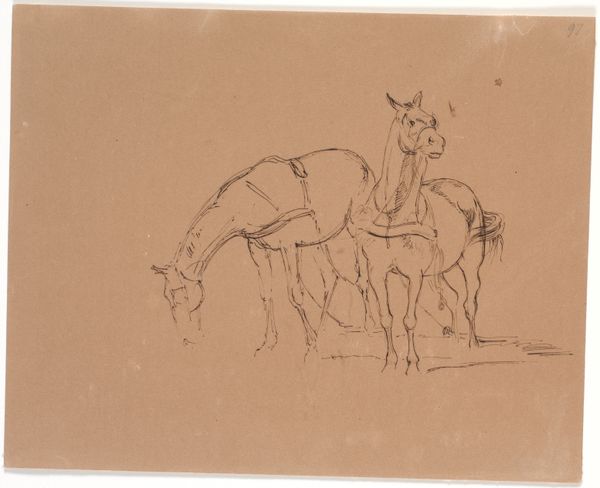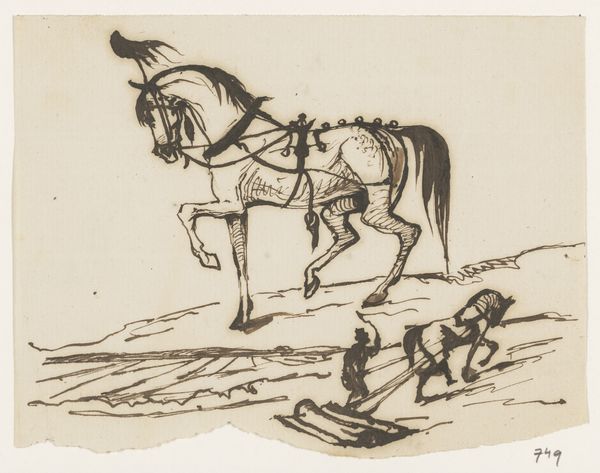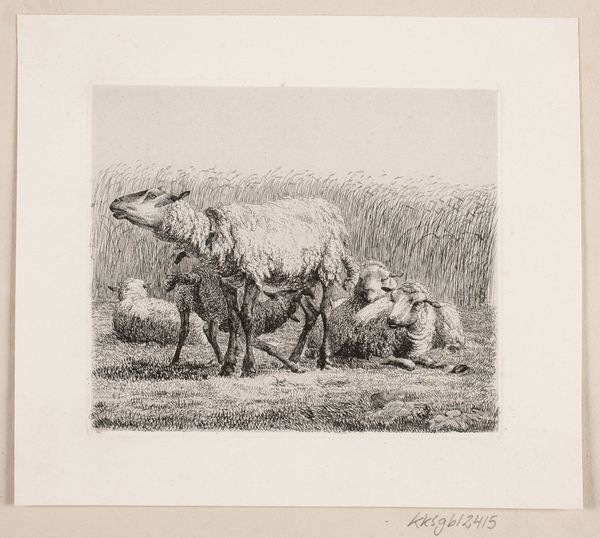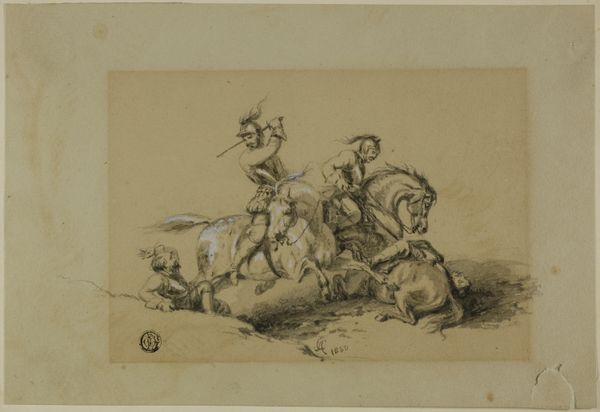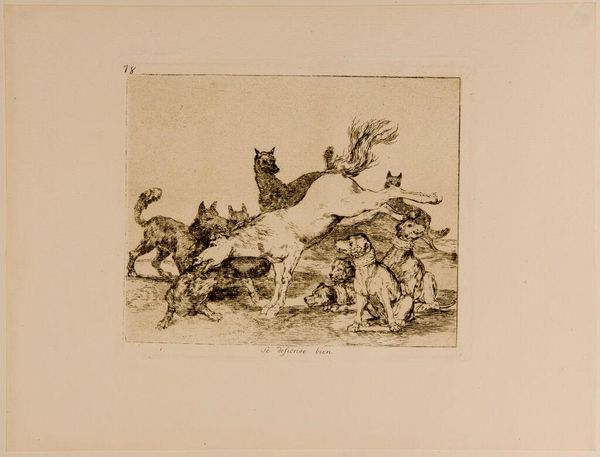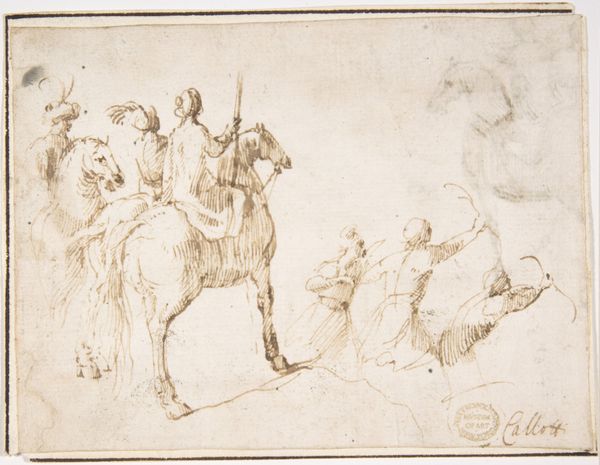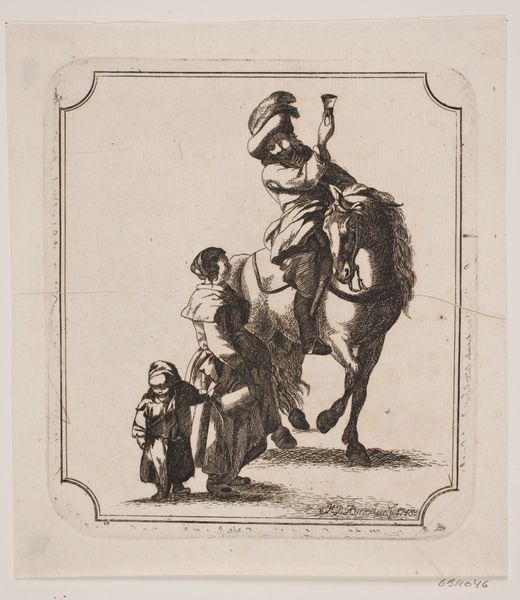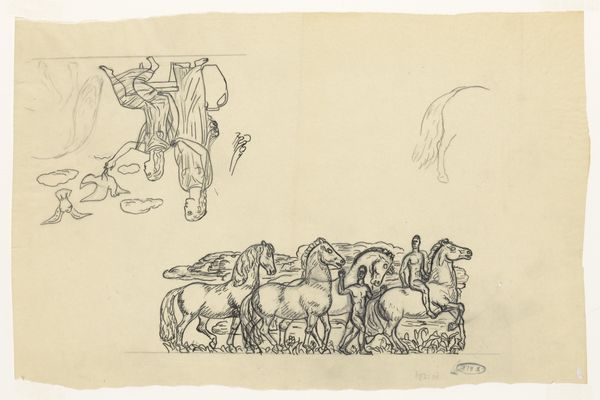
drawing, print, paper, pencil, graphite
#
portrait
#
drawing
# print
#
pencil sketch
#
landscape
#
paper
#
romanticism
#
pencil
#
orientalism
#
graphite
Dimensions: 278 × 365 mm
Copyright: Public Domain
Curator: This is "Arab of the Desert," an 1819 pencil drawing and print held at the Art Institute of Chicago. It's an intriguing composition that immediately draws you in with its central figure and detailed rendering. I find myself wondering about the depiction of its subject. What is your impression of this print? Editor: I noticed its emphasis on fine lines, giving it a documentary feel. The subservient figure and opulent detailing on the Arab’s garments are striking, along with the proud, towering presence of his horse. It all makes me slightly uneasy. How does the cultural context affect our understanding of this work? Curator: Excellent observation! It's crucial to consider the historical context of Orientalism. In the 19th century, European artists frequently depicted the Middle East and North Africa through a lens of romanticized exoticism, often reinforcing power dynamics and stereotypes. Does this print reproduce certain power structures? Editor: I can definitely see that. The way the Arab is portrayed as wealthy and in command, with the other figure in a servile position, reinforces those hierarchies. It feels like a snapshot of colonial attitudes. Curator: Precisely. And how might the Art Institute of Chicago, as an institution, shape our contemporary reading of this work? Are its original intentions still relevant? Editor: Museums historically curated narratives that aligned with dominant societal views. By showcasing this piece today, it prompts us to critically examine its origins and potential biases, doesn't it? Is it possible to appreciate its artistic merit while acknowledging and questioning its problematic context? Curator: Absolutely! Museums should not shy away from controversial pieces but rather contextualize them to foster dialogue. By unpacking the layers of historical influence and artistic expression, we gain a richer understanding of art's role in reflecting and shaping societal values. Editor: I've learned so much by examining it through the lens of Orientalism and the role museums play in shaping our perspectives. It definitely moved past just a pretty picture for me. Curator: And by critically questioning its implications, you've demonstrated that art, even from centuries ago, can still spark meaningful conversation today.
Comments
No comments
Be the first to comment and join the conversation on the ultimate creative platform.
